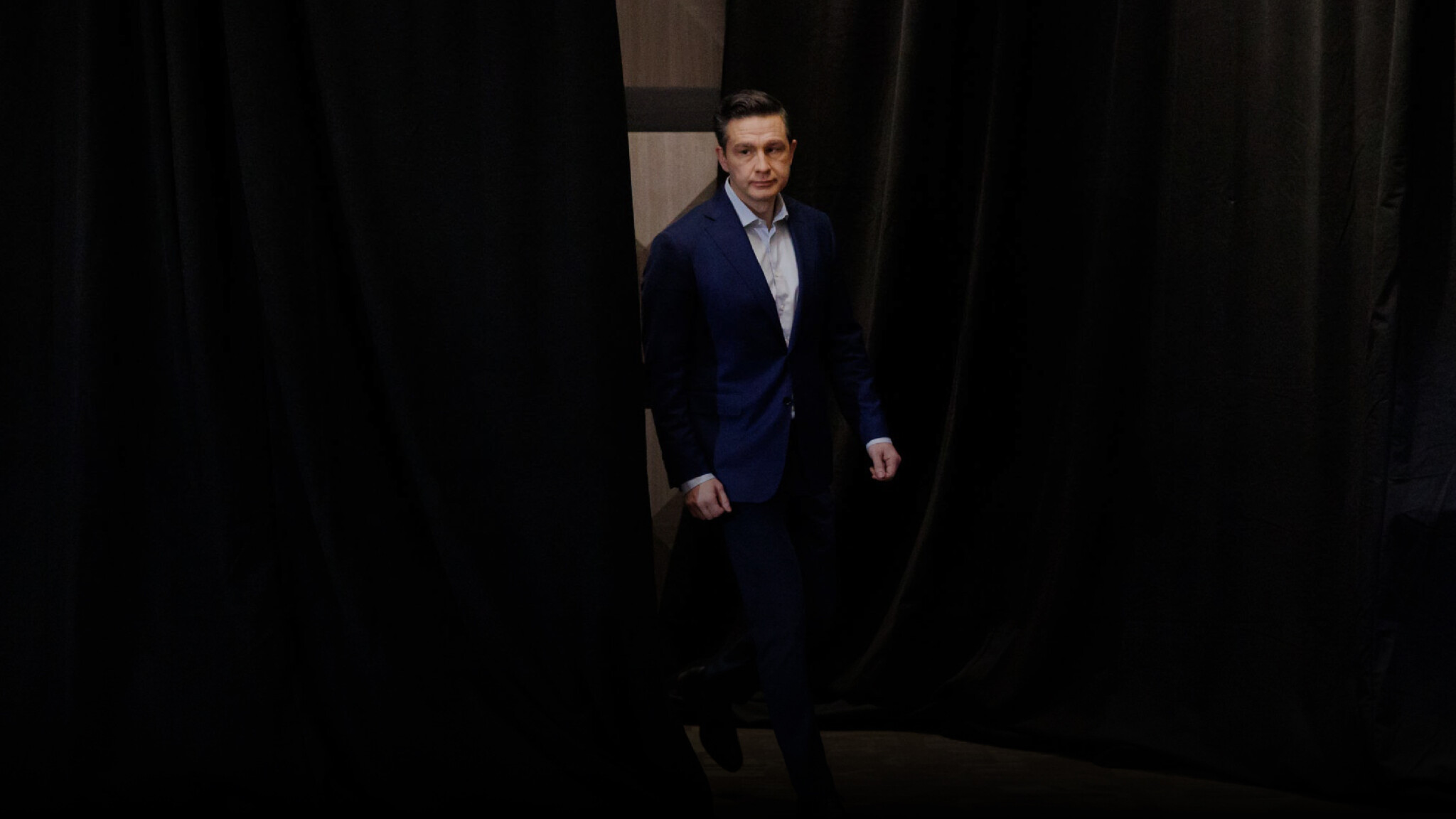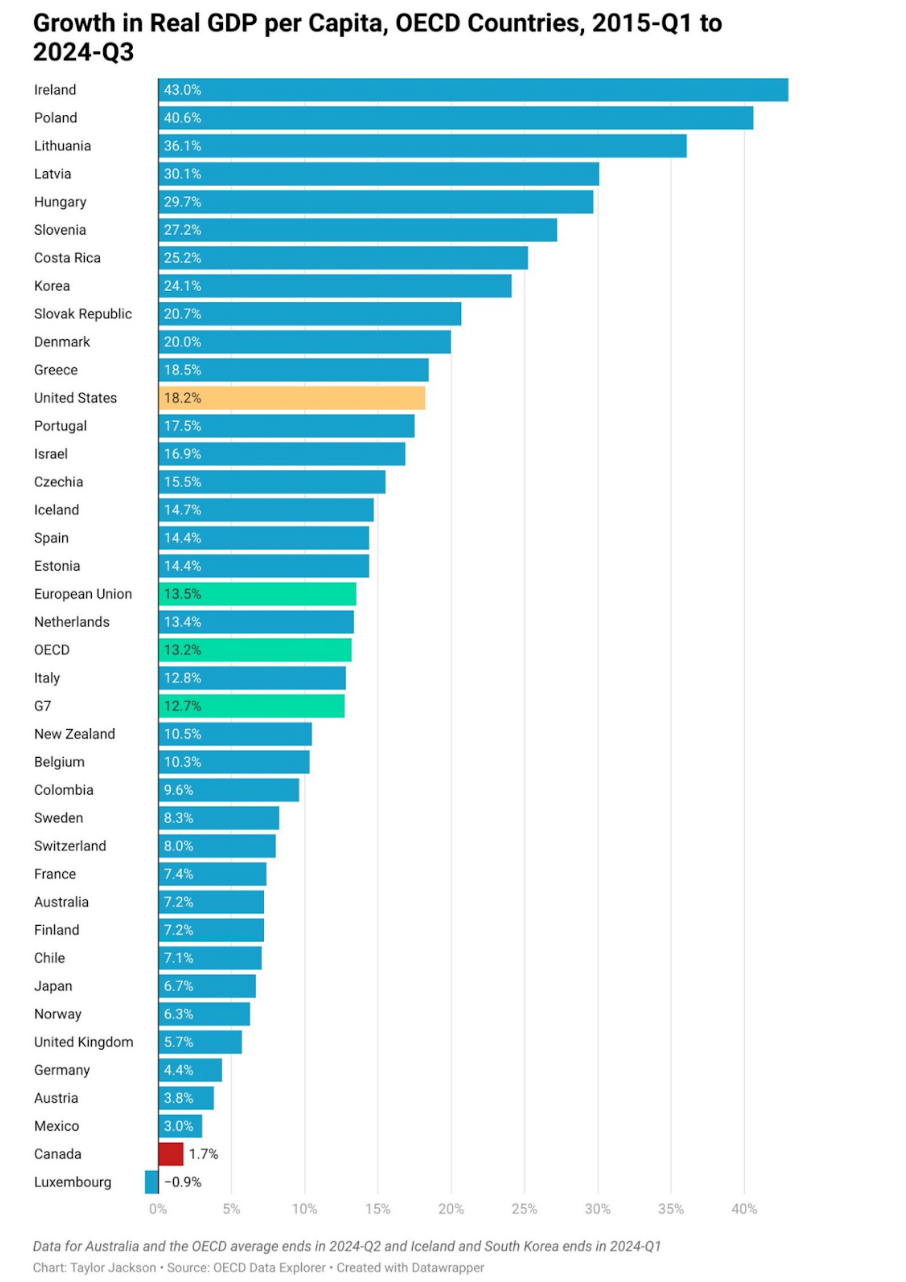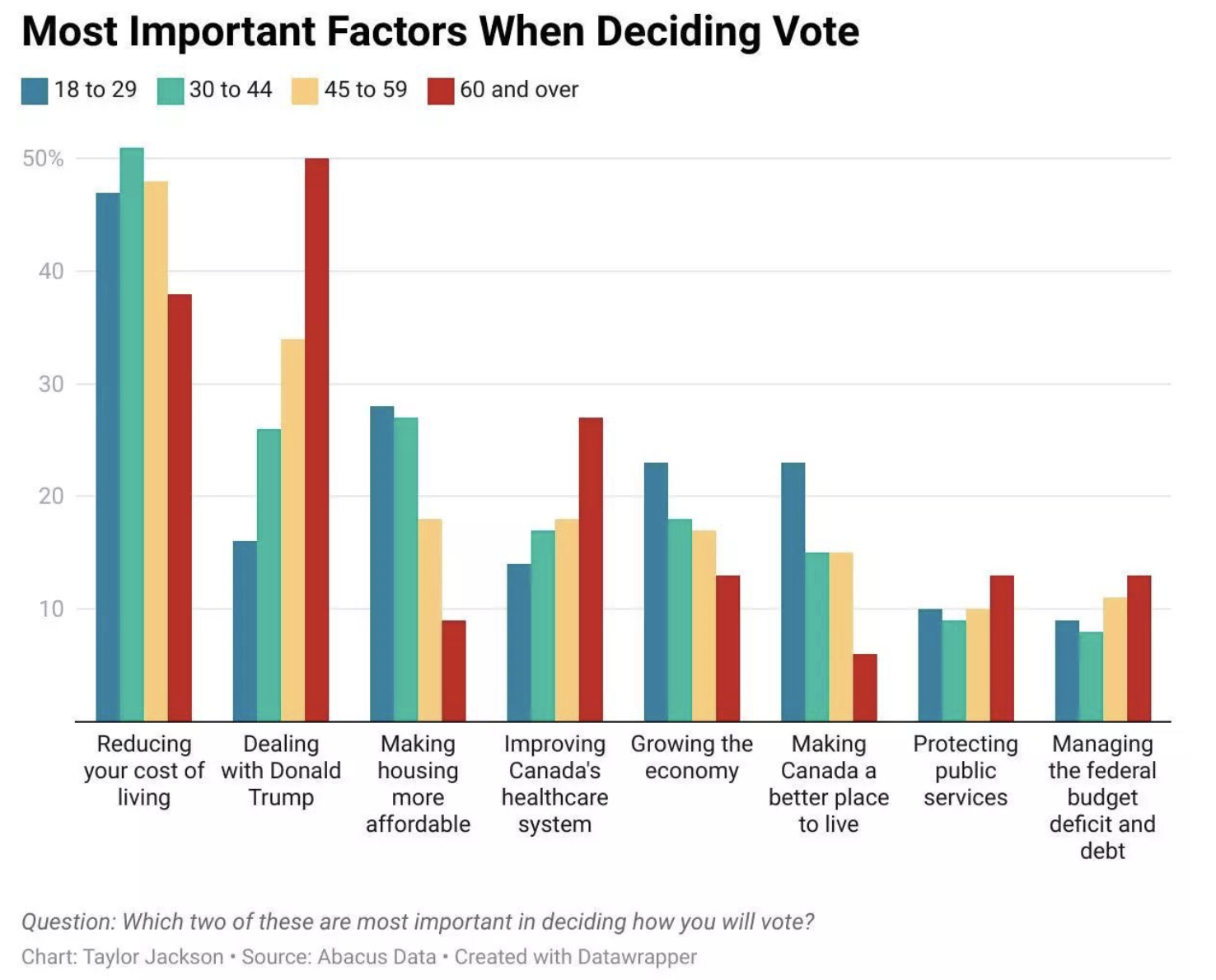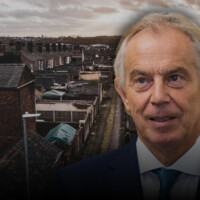
At the start of the year, Canada’s Conservatives had a 25-point lead over a badly discredited Liberal government. They had led surveys of voting intention continuously since April 2022, and their leader, Pierre Poilievre, looked almost certain to be the country’s next prime minister.
But after Monday’s election, a very different outcome has emerged: a victory for the Liberals and their new leader, Mark Carney, who have won a rare fourth term and extended their hold on power by up to another five years. Pierre Poilievre, the Conservative leader, even ended up losing his own seat.
Enjoy independent, ad-free journalism - delivered to your inbox each week
At the time of writing, the Liberals had 167 seats, just five short of the 172 needed for a majority in the House of Commons; the Conservatives had 145 seats, the separatist Bloc Québécois had 23, the left-wing New Democrats seven, and the Greens one. As such, the Liberals will be the leading party in a minority government, as in the last two elections. This is despite the fact that the Conservatives increased their share of the popular vote from 34% in 2019 to 41%. That exceeds the modern Conservative Party’s all-time high of 39.6 % in 2011, which was enough for a majority then, but not in 2025.
Three factors came together to make this unprecedented reversal of political fortunes possible. The proximate cause was the polarization of the electorate and the consolidation of left-wing votes behind the Liberals to an extent not seen for half a century. Voters who previously backed the left-wing New Democratic Party (NDP) defected en masse to Carney’s party, causing its share of the vote to drop from 16% in 2019 to just 6% this time round. Its leader, Jagmeet Singh, lost his own seat and stood down after the scale of their meltdown became clear. Support for the separatist Bloc Québécois also dropped by a third. The result was that ridings (the Canadian equivalent of US districts or British constituencies) which used to host three-way races became two-party contests in which the Liberals were able to outgun the Tories.
The second was the Liberals’ perceived move towards the center since dumping politically toxic former Prime Minster Justin Trudeau in January. At the start of the year, the party under his leadership was scraping all-time lows in public opinion polls. The Tories had successfully tarred him with disastrous mismanagement and blamed his policies for explosive mass immigration (which added 5m people to the population over the last decade alone, taking the foreign born population share to an unprecedented 32%), runaway house prices, high inflation, a breakdown in urban law and order, and stagnant median GDP. He was also associated with a particularly authoritarian and divisive brand of wokeness, epitomized by the fake residential schools “mass graves” hoax, as well as extreme stances on trans issues and euthanasia, both of which frayed Canada’s social fabric as well as its international reputation.

But Conservative dreams of fighting an election against Mr Trudeau were dashed when he resigned on January 6th, pushed out by his own party after the resignation of Chrystia Freeland, his finance minister and previously one of his closest allies. Mr Carney entered the race to succeed him ten days later and immediately repudiated many of his party’s least popular policies such as the consumer-facing portion of Canada’s carbon tax and profligate spending. He also imposed an extreme cosmetic makeover on the party’s public image, ditching Mr Trudeau’s masochistic identity politics in favor of patriotic messaging and a more pragmatic focus on cost-of-living issues like house-building. This left Mr Poilievre wrong-footed, as he had built his personal brand and campaign fighting against Trudeau’s culture war and his signature environmental policies.
But although Carney was obviously more intelligent and capable than Trudeau, and wasn’t saddled with as much baggage, he had glaring vulnerabilities as well. The uncharismatic economist had never run for office, and had no idea how to run a political party on a day-to-day basis. He proposed barely any original ideas during the campaign, preferring to maintain Trudeau-lite policies and steal proposals from the Conservatives. He is a longstanding supporter of net zero, and added the co-founder of a lobbying group that advocates for massively increasing the Canadian population to 100 million via even-higher mass immigration to his council of advisors.
So, what happened? Donald Trump’s 25% tariffs on Canadian products and repeated threats to turn America’s northern neighbor into the 51st state became the biggest issue of the campaign for many voters, especially those over 60. These Canadians branded Poilievre and Canada’s Conservatives as Maple MAGA. The pollster Léger found that by a margin of 46% to 28%, Canadians preferred the Liberal leader over Poilievre as the person to take on the American president. This is why Mr Carney focused so much of his campaigning against Mr Trump rather than his domestic opponent, declaring at the weekend that “[i]n this crisis we have to prepare for America’s threats to our very sovereignty. They want our land, our resources, they want our water, they want our country”.

Mr Trump’s perceived threats to Canada’s economy and sovereignty played to the Liberal leader’s strengths. As a former governor of central banks in Britain and Canada who saw Britain through Brexit and Canada through the 2008-9 financial crash, he struck many voters as a plausible crisis manager. When asked why they preferred him as their champion over the Tory leader, 45% of voters said it was because of his experience in these roles, while 42% said it was because of his “calm and stable” demeanor.
Poilievre and the Conservatives, meanwhile, ended up tarred by perceived proximity to MAGA. In reality, the two men are very different in ideology, personality, and policies; the Canadian is for the most part an unreconstructed neoliberal small state-er, more inspired by Milton Friedman than by national populism. Trump knew this, too: “I think his biggest problem is he’s not a MAGA guy, you know? I mean, he’s really not… a Trump guy at all”, he said in a February interview. But Poilievre’s propensity for attacks on media bias, his unprecedented success in wooing disaffected young Canadians squeezed by mass immigration and unaffordable housing, and his calls to crack down on fentanyl dealers and cut funding for universities who fail to respect free speech created just enough similarity to mobilize left-wing voters who might previously have voted NDP into falling into line behind the Liberals to block “maple leaf MAGA”. Mr Poilievre tried to change the subject back to domestic issues and belatedly rebuked the American president for his interventions late in the campaign, but to no avail. Outflanked on patriotism, weakened on affordability, and wrong-footed on the culture war by Trudeau’s ouster, the Conservatives were backed into a political corner.
But despite the huge last-minute swing to the Liberals, their mandate is a vulnerable one. It can survive only by piecing together ad hoc deals with NDP and Bloc Québécois MPs – precisely the dynamic that hamstrung the late Trudeau government over the last half-decade of minority governments – while at the same time facing an empowered Conservative opposition that feels narrowly cheated of victory. And Mr Carney faces prodigious immediate challenges: pantomime threats of annexation aside, Canada sends more than 77% of all of its goods to the United States, trade that supports 10% of all employment. Much will therefore hinge on what sort of deal he can clinch when the current USMCA free-trade agreement between the United States, Mexico, and Canada comes up for review next year. Alongside the dreadful inherence from the Trudeau years, the prospect of a painful economic restructuring either way suggests governing will be far from easy for Carney, whose honeymoon as “Captain Canada” is likely to be shortlived. With a dangerously divided 45th parliament in Ottawa, it would be no great surprise if Canadians have to return to the polls next year to dispel the indecision this election result will likely bring about.




Comments (0)
Only supporting or founding members can comment on our articles.